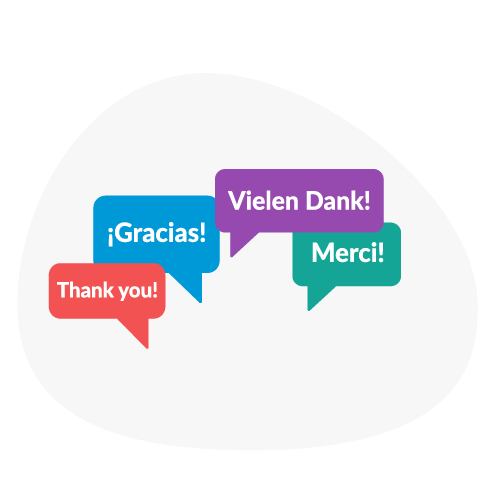Lithium-Ion Batteries
Many everyday devices and machines, such as phones, laptop computers, and electric vehicles, utilize lithium-ion (Li-ion) batteries as a reliable and convenient method of energy storage. Lithium-ion batteries are the preferred battery type with modern technology due to their low tendency to self-discharge, high energy density, and no memory effect, which is detrimental to battery capacity over time.
Two electrodes are used in lithium-ion batteries: anodes and cathodes. Lithium ions travel through an electrolyte solution from the anode to the cathode to generate an electrical current when discharged. The lithium ions charge by traveling back through the electrolyte solution in the opposite direction of the discharging current, from the cathode to the anode.
Technology Trends: Anode Binders
Graphite is the most used material in the anode of lithium-ion batteries. Intercalation is the term for the passage of lithium ions in and out of the electrode; graphite is very conducive to this process. Graphite particles are held together with a binder to give them the required mechanical strength to be used as an anode.
A combination of polyvinylidene fluoride (PVDF) and n-methyl-2-pyrrolidone (NMP) was used as the binder in the past. Today, a popular option that is much safer in terms of chemistry and more environmentally friendly is an aqueous mixture of carboxymethyl cellulose (CMC) polymers. CMC constitutes only a relatively small portion of the anode formulation, but its impact on overall battery performance and storage is significant.
Optimizing Performance with TEXTURECEL™ BA
TEXTURECEL™ BA is a CMC thickening agent and binder used to increase battery performance, providing the necessary functional groups, purity, and viscosity for battery applications.
Standard CMC is ordinarily used as a cellulose thickening agent to meet viscosity requirements in food, pharmaceutical, and personal care applications. The standard grades contain high levels of cellulose gel impurities that are unsuitable for battery anode applications. These impurities have a detrimental effect on battery performance, which can be quantified and observed when coating a CMC solution onto a glass substrate.

Market-Standard CMC

TEXTURECEL™ BA Grades
The images above show that the TEXTURECEL™ BA grades for battery applications contain far fewer gel impurities than the market-standard CMC.
A demonstration of the impact on battery performance was created using a market-standard CMC and TEXTURECEL™ BA to formulate anode coatings. These coatings were then applied onto copper to create anodes to make pouch cells. This chemical formula for the anode coating is listed in the table below.
Ingredient
|
Amount (g)
|
Graphite
|
46.75
|
2% CMC Solution
|
30.44
|
Water
|
11.18
|
SBR Latex
|
1.01
|
Conductive Carbon Black
|
0.73
|
Overnight, the electrodes were allowed to dry in a vacuum oven set to 130°C. The table below shows the formulation for the pouch cells assembled using the anodes manufactured with the CMC binders.
Component
|
Details |
| Cathode |
Lithium sheet plate, unilaterally coated with NMC 622 |
| Separator |
Polyolefin nonwoven, coated with ceramics (SEPARION®*) |
| Electrolyte |
LiPF₆ EC/DMC |
*SEPARION® is a registered trademark of Electrovaya Inc.
Testing of C-Rate
Testing was first done on C-rate, the speed measurement at which a battery is charged or discharged, providing relevance to a battery's overall capacity. The discharge capacity of the cells was tested over 100 cycles at C-rates varying from C/20 to 5C.
Overall capacity is typically reduced during the rapid charging and discharging of batteries. Therefore, it is critical to minimize the decline in capacity during high C-rates to produce batteries that perform better. In the testing data above, the cells produced using the TEXTURECEL™ BA grades exhibited a significantly smaller reduction in discharge capacity at high C-rates than those produced with the market-standard CMC, which contain high impurities. Based on these results, when CMC binder gel impurities are minimized, an average 20% increase in the discharge capacity is gained from 3C to 5C.
Long-Term Aging Study
TEXTURECEL™ BA and market-standard CMC binders were compared for their impact in a long-term aging study. The discharge capacity of batteries made with both types of CMC binders was tested over approximately 800 discharge and recharge cycles. The results are shown below.
The lines above are mostly parallel, suggesting that all cells lost capacity at the same rate. However, the cells using TEXTURECEL™ BA grades had a significantly higher capacity after aging through 100 cycles. By the end of the test, the discharge capacity remained 10%–15% higher than the standard CMC cells.
Summary
Lithium-ion batteries are the preferred power source and energy storage method for modern devices. Carboxymethyl cellulose (CMC) makes up about 0.1% by weight of these batteries. Though present in small amounts, the right type of CMC in a formulation can improve the performance and energy density of batteries by about 10%. In the current market, many of the standard CMC polymers used in battery manufacturing have a high level of gel impurities that negatively affect battery performance.
TEXTURECEL™ BA CMC polymers are produced with high purity and greatly improve the battery life, capacity, and charging speed when used as a binder in anode coatings. Listed below are the grades available for commercial use.
Grade
|
CMC Content (min)
|
Brookfield Viscosity (cPs)
|
Degree of Substitution
|
|
|
99.5%
|
1,900–2,800
|
0.65–0.75
|
|
|
99.5%
|
1,900–3,000
|
0.75–0.95
|
|
|
99.5%
|
1,900–3,000
|
0.65–0.75
|
|
|
99.5%
|
3,000–4,000
|
0.82–0.95
|
ChemPoint is a distributor of specialty chemicals and a technical resource for formulators. Click the link below to contact us to request your TEXTURECEL™ BA sample and work with a technical specialist to improve your lithium-ion batteries.


